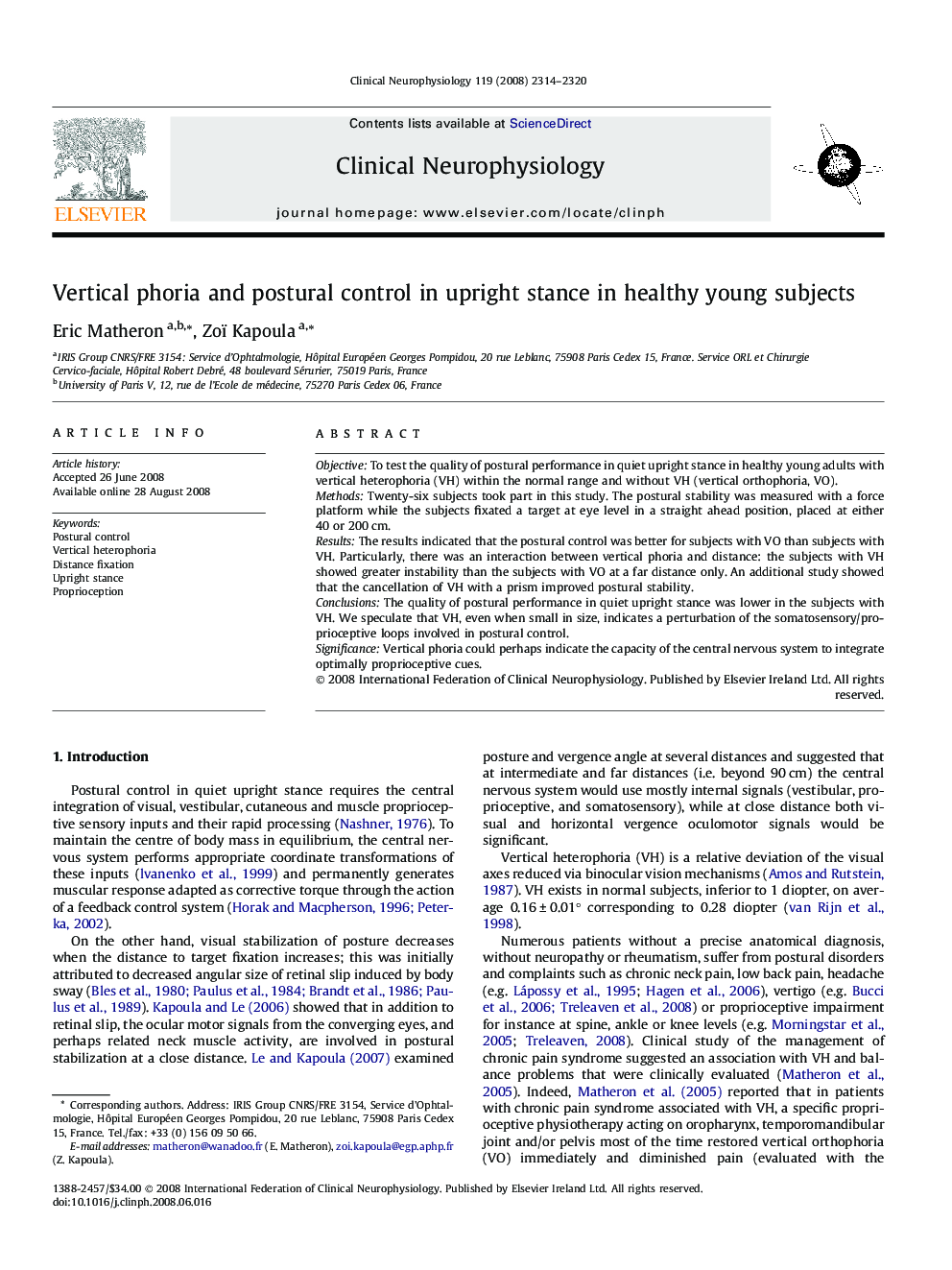| Article ID | Journal | Published Year | Pages | File Type |
|---|---|---|---|---|
| 3046468 | Clinical Neurophysiology | 2008 | 7 Pages |
ObjectiveTo test the quality of postural performance in quiet upright stance in healthy young adults with vertical heterophoria (VH) within the normal range and without VH (vertical orthophoria, VO).MethodsTwenty-six subjects took part in this study. The postural stability was measured with a force platform while the subjects fixated a target at eye level in a straight ahead position, placed at either 40 or 200 cm.ResultsThe results indicated that the postural control was better for subjects with VO than subjects with VH. Particularly, there was an interaction between vertical phoria and distance: the subjects with VH showed greater instability than the subjects with VO at a far distance only. An additional study showed that the cancellation of VH with a prism improved postural stability.ConclusionsThe quality of postural performance in quiet upright stance was lower in the subjects with VH. We speculate that VH, even when small in size, indicates a perturbation of the somatosensory/proprioceptive loops involved in postural control.SignificanceVertical phoria could perhaps indicate the capacity of the central nervous system to integrate optimally proprioceptive cues.
